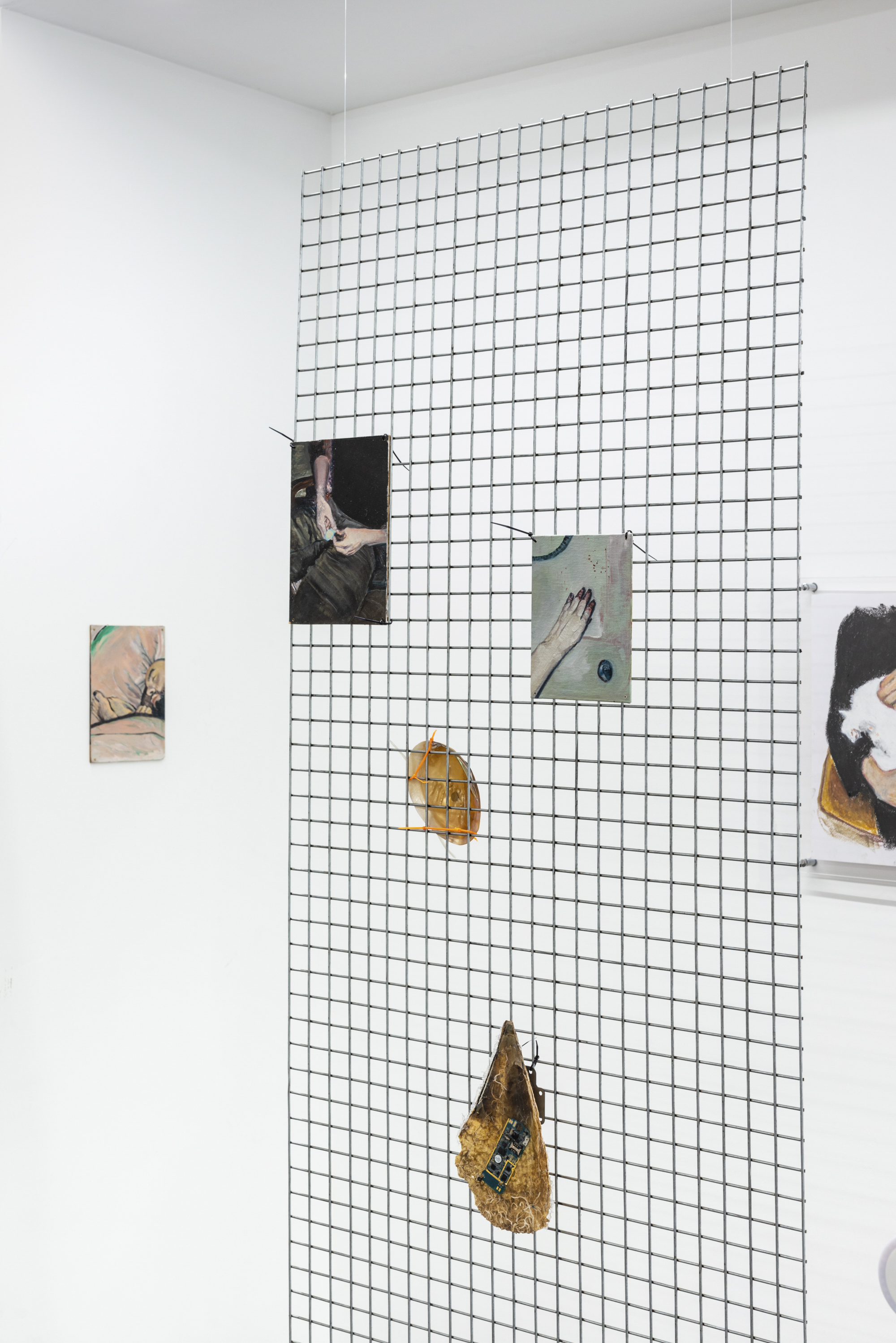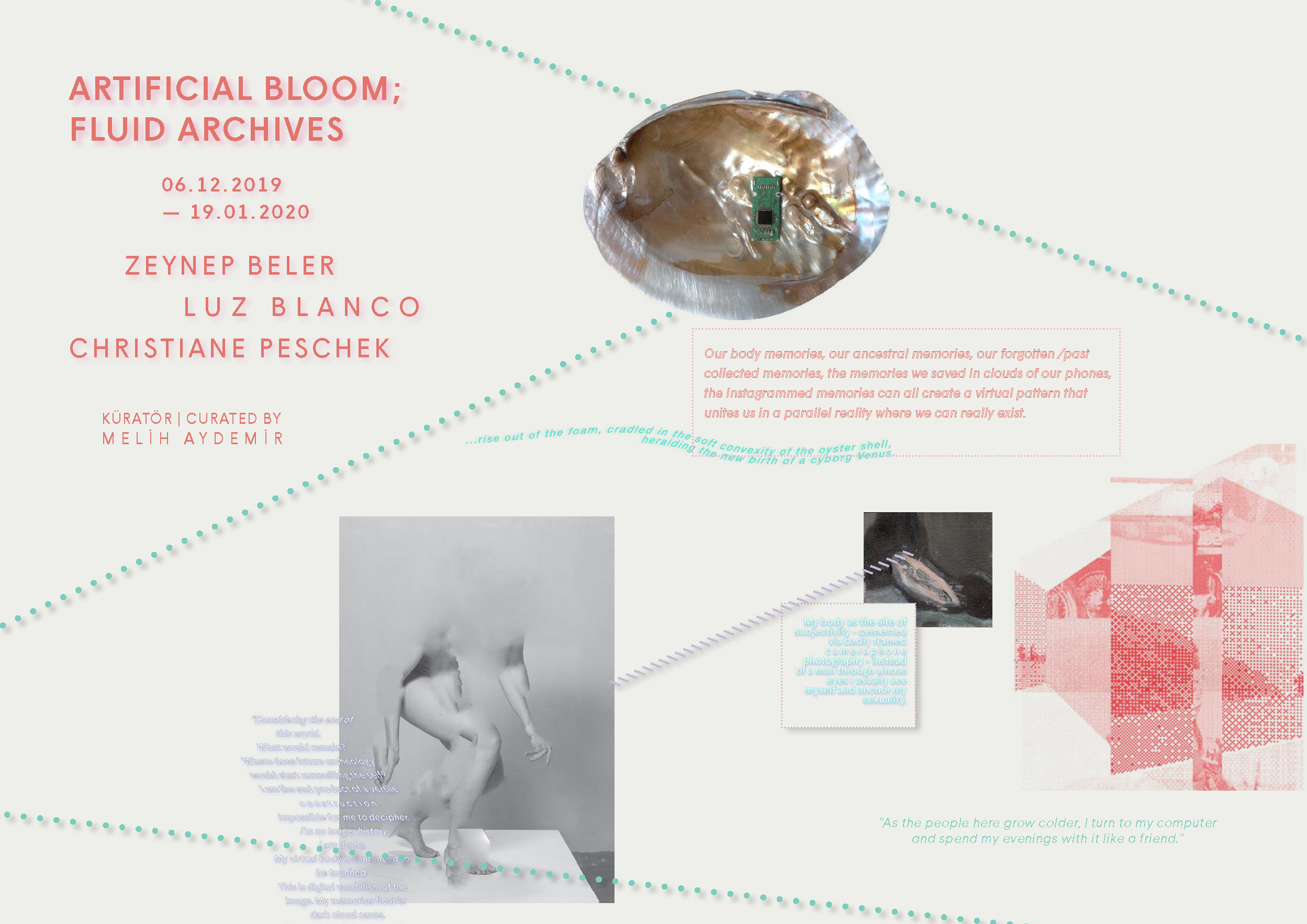
SANATORIUM presented “Artificial Bloom; Fluid Archives" between December 6, 2019 and January 19, 2020. The exhibition brings together the works of Zeynep Beler, Luz Blanco, and Christiane Peschek in the context of non-linear, fluid and hybrid realities with the curation of Melih Aydemir.

''As the people here grow colder, I turn to my computer and spend my evenings with it like afriend.'' Kate Bush’s Deeper Understanding (from her album Sensual World, 1989) starts with these lines, and builds into a conversation between the computer and the artist. The computer says ''Hello, I know that you're unhappy, I bring you love and deeperunderstanding" and she accepts this offer - a sensual communication between the human and the machine. The offer that Bush accepted resonates with Donna Haraway's pioneerin essay ''A Cyborg Manifesto'' (1985) on merging these two dimensions and embracing techno-communication tools in order to re-craft our bodies. As the song progresses compute sounds mix with an ancient choir singing, Bush neglects her bodily need and sinks into apleasure she had never felt before.
As the line between our IRL (in-real-life) and virtual existence blurs, we find new ways to reconstruct ourselves and to expand our material limits. The field of digital covering ou rexperiences, memories, and identity allows the emergence of self-documentation and archiving methods that transcend linear narratives. Our presence is continuously transformed on the ever-expanding Internet by means of collecting and storing our memories. The utopian dream that we are real-time memory collector cyborgs creates transparent archive spaces where these memories can get collected. The exhibition seeks possibilities in this field, beyond the linear narratives constructed by a certain gaze. It also considers the expansion of virtual networks as spaces where feminine and queer memory can find itself a nest, while reflecting on the cyberfeminist context of the documentation tools that have become extensions of ourselves.

Artificial Bloom, which gives the exhibition its name, is taken from the 2018 song Faceshopping by SOPHIE, announcing an acceptance of the reconstruction of one's body. In the album Oil of Every Pearl's Un-Insides, where SOPHIE embraces her trans identity and celebrates it with fluid visuals, the track takes the virtual and physical interventions that one employs to ground their own reality as a way of encouraging the construction of queerbodies. The blossoming and transition here is not only physical but also refers to the identities that change between the virtual and the real. The capacity for simulation by media systems that we embraced, reminds us that we humans, too, are performative entities.1 Bloom is also the name of a computer graphics effect that softens details by adding intense light to images. Fluid Archives fragments those memories judged worth less to document, perhaps "unreal", yet transmitted and disseminated through body memory.

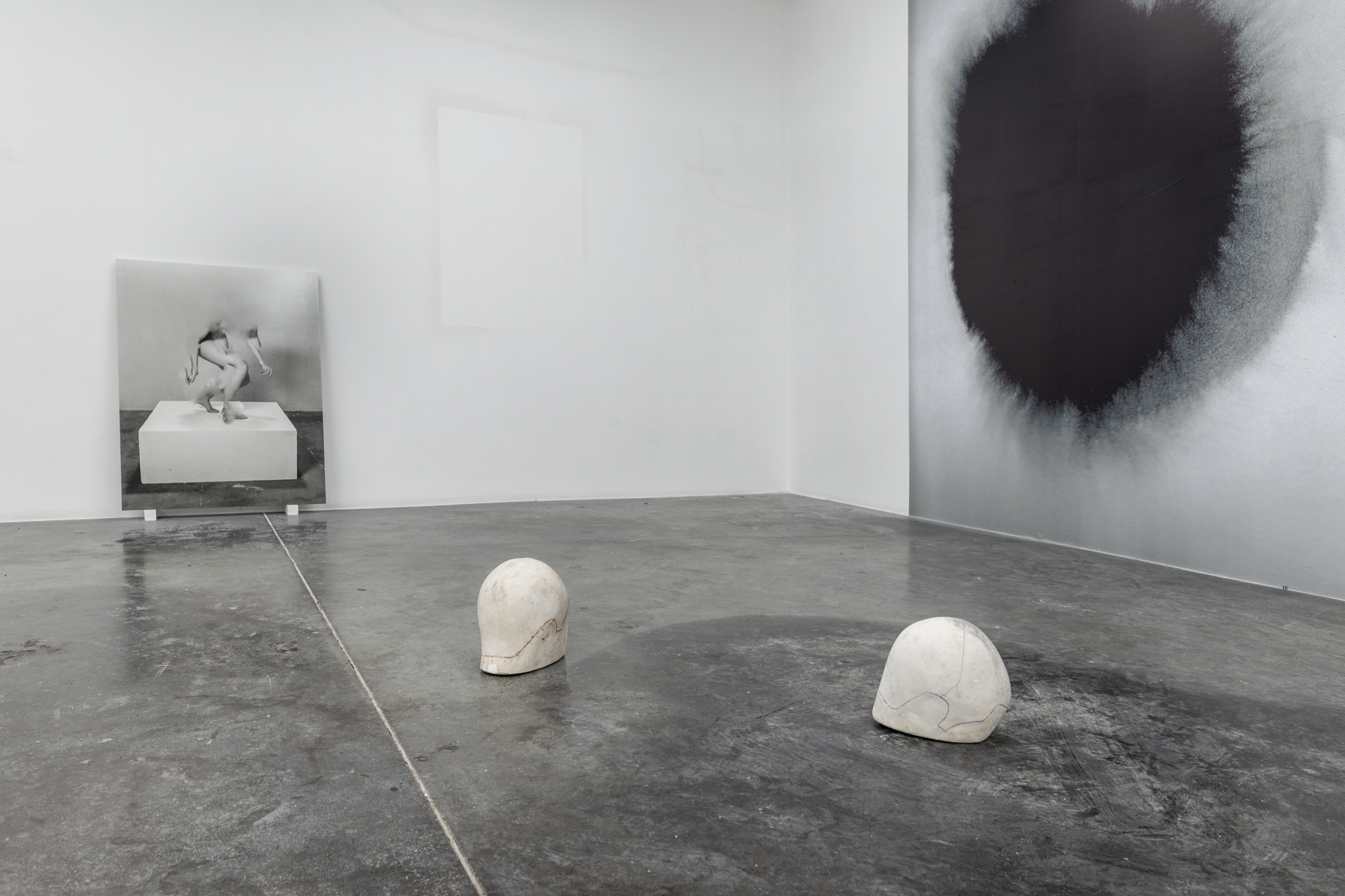
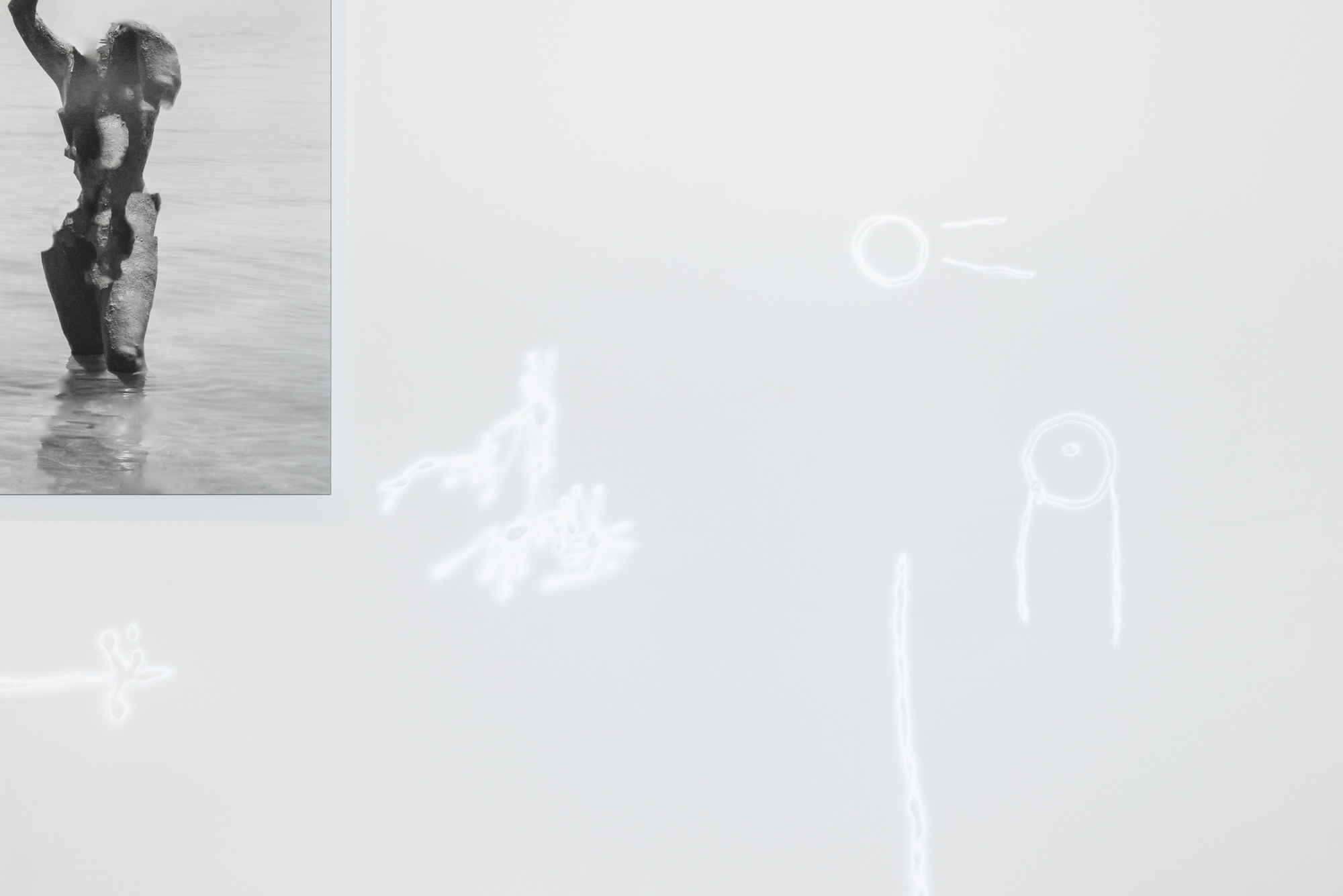
The photographs that Christiane Peschek manipulated in the ‘POSE’ series show bodiesscattered like a flower blossom. These artificial bodies, distorting the linear visuality created by the classical female pose and the masculine gaze, are the continuation of the post-cyberfeminist narrative2 that defines only what it is not. These visuals, where identities and body parts fly freely and fluidly, are the digital photographs of a physical deconstruction. They stand for the transformation of both culturally constructed and contextually determined identities into spaces of formation by constantly changing over space andtime.3 Peschek imagines a future archeologist digging our digital ruins, and creates a virtual cave of digital paintings, where ever-changing flow accumulates. Peschek's technique producing silver gelatin prints of digital images, inverts the usual process by converting digitally manipulated photographs into negative film. Choosing this technique - accepted as archival through the reproduction of frozen light on the surface, from pixels to grains- the artist emphasizes that body transformation doesn’t make us less genuine. The images that depict the transfer in reverse, from family albums to data clouds and the self-archiving nature of Instagram pages, are turned into documents of non-bodies. As Peschek's installation expands, the light-reflecting material on the walls and sculptures invites the viewers to use the flash on their smartphone, questioning our current means of observation behaviors.


The moments that were first photographed and then painted by Zeynep Beler, document the female experience in the post-internet era. The moments accumulated on her phone, th esurrounding bodies and other non-reactive surfaces turn into textures. The artist's painting technique resembles the contact of hands with the screen, the marks left by the sliding fingers on the screen are reflected in the paintings. Smartphone-holding hand and body parts melt and dissolve into each other, and the desexualized body becomes a surface carrying other bodies. Beler's self-documents, the images she shares on Instagram are the material of her production and become increasingly liquid. Bodies are a field of subjectivity and a platform in which political imagination becomes materialized, while one becomes their own subject of experiment.4 Physical manipulation is accompanied by installations that visualize hybrid realities. In the installation, using hardware store materials, the phone parts and false nails placed on a ghost net that is removed from the sea show the physical remnant of our extensions, while also offering a present nostalgia of the sea-punk movement5 that emerged in networks like Tumblr in the early 2010s. The memory cards placed in the seashells, while appearing as found objects, heralds a Cyborg Venus rising through the shell. As layers get connected with cable zip ties, it becomes a body for a techno-system.

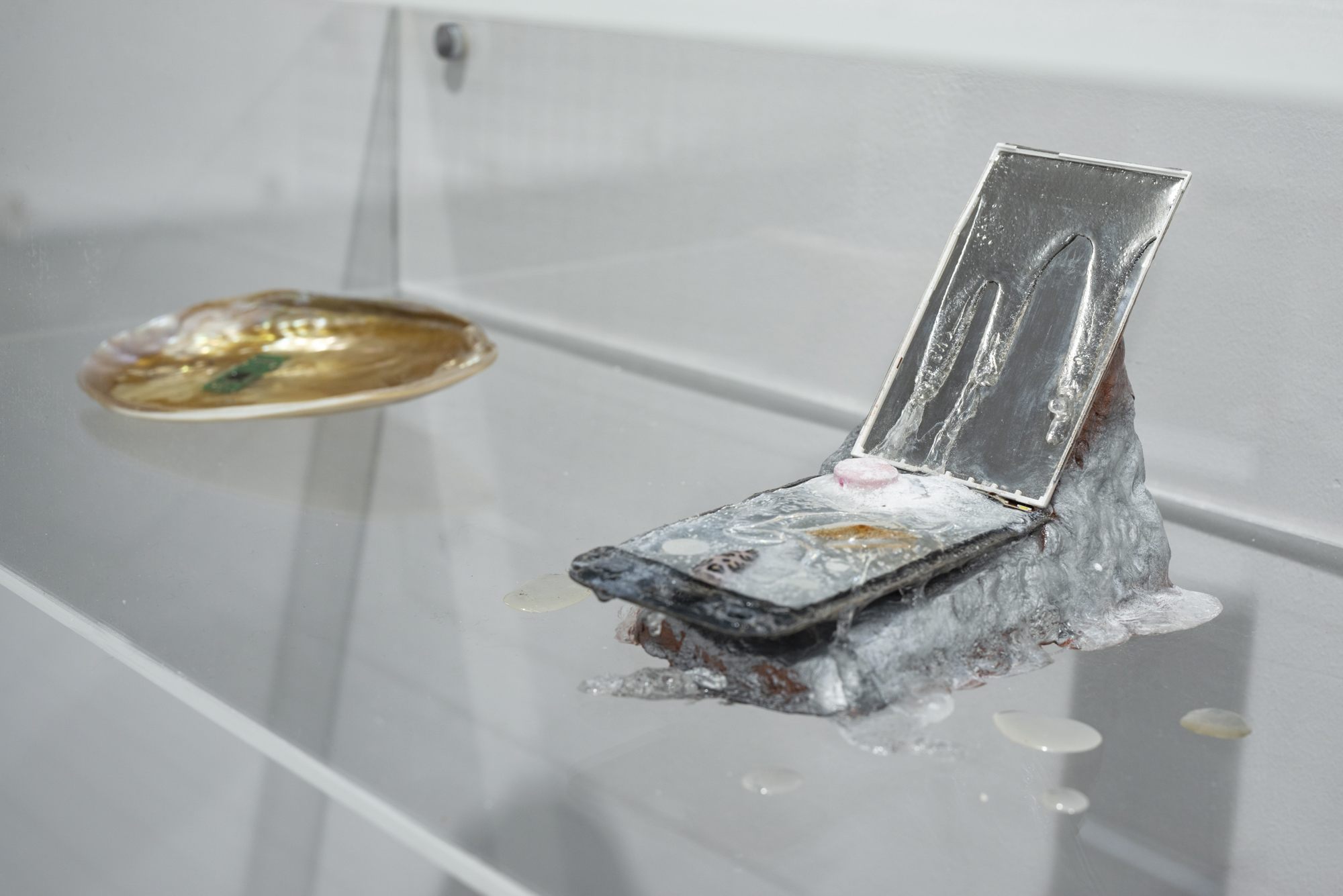

Luz Blanco's works, based on the dialogue between erasure, memory and forgetting, reflects on the electronic transfer processes and possible missing elements. Separating the pixels in the photo one by one and processing them by drawing on paper, Blanco depicts the fragments where bodies and memories are separated. The transition between layers presents an archeology of the body memory. The transformation of collective memories in the electronic field traces the narratives formed by the fragmentation of memories through various images.
[i] Lee Mackinno, 2016, Love Machines and the Tinder Bot Bildungsroman, e-flux Journal #74 - June 2016
[ii] Old Boys Network—an international coalition of Cyberfeminists established in 1997 in Berlin—agreed to intentionally keep the term undefined in order to keep things as “open as possible as consensual.” They published ‘100 Anti-Theses of Cyberfeminism.’ on web, in order to make a list of definitions that don’t define cyberfeminism.
[iii] Julie Tilsen, David Nylund, 2010, Heteronormativity and queer youth resistance: Reversing the discourse
[iv] Paul B. Preciado, 2013, Testo-Junkie: Sex, Drugs and Biopolitic, e-flux Journal #44 - April 2013
[v] A mostly Internet-based phenomenon birthed out of the Tumblr and Twitter universes as a means to describe a lifestyle aesthetic that is all things oceanic and of the sea.


